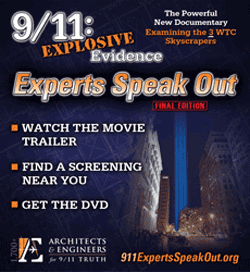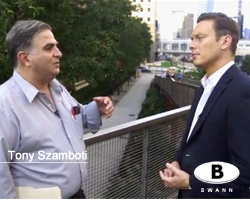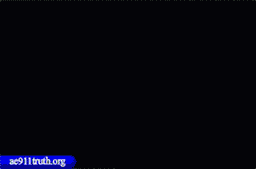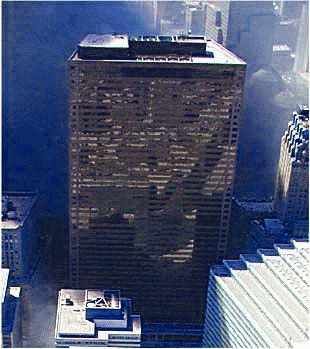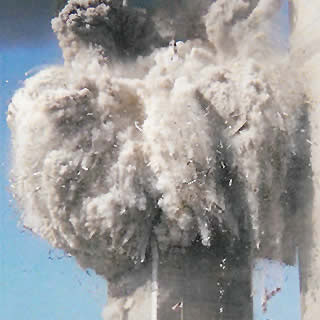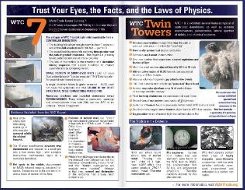| The News Media at War |
 |
 |
| Written by Terry Hansen |
| Tuesday, 22 June 2010 22:30 |
|
Ed: As AE911Truth makes many efforts to promote its mission among and through the mainstream media, this article offers some reasons why that has proven to be a daunting and largely unsuccessful effort. For many Americans, one of the strongest reasons for accepting the official story about the shocking events of Sept. 11, 2001, is their deep-seated belief in the free press. We are taught from an early age that the Bill of Rights to the U.S. Constitution guarantees us many cherished freedoms, among which is freedom of the press. If there were really any serious problems with the official 9-11 explanation, many Americans reason, this information wouldn't go unreported for long in our media-saturated society. Major news organizations such as CNN, Time, and the New York Times would most certainly investigate and report any serious problems almost immediately. Nearly all major American news organizations have embraced the government's version of events with few questions asked. Consequently, many Americans naturally conclude that it's safe to accept the official story at face value. There is a very serious flaw in this line of reasoning, however: The United States is at war and, for nearly a hundred years, the U.S. government, major media companies and leading journalists have joined forces with the military during wars and other national emergencies to shape public opinion by carefully controlling what Americans are told about world events. Especially since World War I, whenever the U.S. government has chosen to take the nation to war, or to address some other major emergency, it has quietly called upon top journalists and media executives to help overcome anti-war sentiment, promote popular hostility toward a designated enemy, or simply calm public anxieties. This may seem surprising to many readers, so it is worth reviewing a few historical examples of such media-government collusion. Because deception is a fundamental technique of warfare, military organizations have sought control over war-related information virtually since the dawn of human history. 
The Chinese writer Sun Tzu put it well in his classic work, The Art of War: “All war is based on deception,” he wrote. “Therefore, when capable, feign incapacity; when active, inactivity. When near, make it appear that you are far away; when far away, that you are near. Offer the enemy a bait to lure him; feign disorder and strike him.” 1 In modern times, deception has always employed two fundamental stages: censorship followed by propaganda. Censorship deprives the public and enemies of accurate information about what is taking place. Once this information vacuum has been created, propaganda is injected into this conceptual void, thus creating a false but entirely believable picture of events. In the age of mass media, this simply couldn't be achieved without the assistance of major news organizations, journalists, and other communication outlets. Thus, governments nearly always appeal to these organizations for help in this complex task.
The British Empire, which once ruled much of the planet, was for some centuries among the most skilled practitioners of this dark art. Unlike revolutionary America, imperial Britain never embraced the notion of a free press, since centralized control of news and information was essential to its global deception activities. According to Philip Knightly, author of The First Casualty: From Crimea to Vietnam: The War Correspondent as Hero, Propagandist, and Myth Maker, Britain was so skilled in the use of propaganda during World War I that it became a major inspiration for the later efforts of Nazi Propaganda Minister Joseph Goebbels. 2 The keystone to British deception plans was always a close but clandestine working relationship with newspaper publishers and other media organizations. A War to End All Wars Prior to World War I, when America's imperial aspirations were still relatively modest, the U.S. military was correspondingly unsophisticated in the uses of deception. With the coming of World Wars I and II, however, this situation changed drastically, mainly through the assistance of British intelligence which tutored its American counterparts, largely out of a desire for self-preservation. In the early years of World War I, Britain was locked in a military stalemate with Germany from which it could not extricate itself without help from the United States. There was one problem, however: American citizens were overwhelmingly opposed to involvement in the war. To alter America public opinion and bring the U.S. into the war on its side, Britain retargeted its propaganda machine toward North America. It also urged the U.S. government to create a home-grown censorship and propaganda apparatus, which it soon did with help from U.S. media organizations and journalists. First, though, the U.S. government cracked down on the anti-war press and public dissent using the then newly passed Espionage and Sedition Acts. 3 This nearly did away with free speech. 
Once it was certain Americans could get little accurate news about the senseless bloodbath taking place across the Atlantic, President Wilson, largely through the influence of journalist and public-relations expert Walter Lippmann, soon set about creating a vast American propaganda machine similar to Britain's. Wilson, in what could be viewed as a political masterstroke, hired the noted progressive journalist George Creel to build and manage the new U.S. propaganda bureaucracy. This gave the organization instant credibility with the public and helped Creel recruit more top journalists into the program. The new institution was given the innocent-sounding name, “the U.S. Committee on Public Information (CPI).” Creel staffed his new propaganda team with experts from all aspects of the U.S. media industry. Virtually all available modes of communication were soon put to work selling the war to the American public including newspapers, posters, cartoons, films, radio broadcasts, academic pamphlets, and even public speeches. 4 Looking back at the CPI's efforts from the perspective of some decades, communications scholar and author Stewart Ewen concluded, “In spite of Creel's consistent denials, the 'House of Truth' was perched not on a foundation of facts, but upon a swamp of emotions.” 5 After Pearl Harbor With the coming of World War II, America's uses of deception became considerably more extensive and sophisticated, thanks again to help from British intelligence. World War II was total war and the already fuzzy dividing line between journalism and deception virtually disappeared. American journalists were now fighting on the same team as the generals. Censorship and propaganda were by this time such large operations that they could no longer be managed by a single organization, such as the CPI. Media censorship was handled by the U.S. Office of Censorship, headed by Byron Price, formerly executive news editor of the Associated Press, later given the title Director of Censorship. Propaganda was by now a much more scientific business than it had been during World War I. Foreign propaganda was initially created and distributed by a new super-intelligence agency called the Office of Coordinator of Information (COI), under the direction of Col. William “Wild Bill” Donovan. COI drew its staff from newspapers, radio-broadcasting organizations, and Hollywood studios who then happily set to work fighting “the good war” with carefully crafted (and often overtly racist) words and images. 6 
Domestic propaganda, designed to keep the American public solidly behind the war effort, was managed by an organization called the Office of Facts and Figures (OFF), later renamed the Office of War Information (OWI). The overall job of promoting the war at home was given to Elmer Davis, an author, CBS radio announcer, news analyst, and former New York Times reporter. OFF / OWI was managed by poet Archibald Macleash, formerly head of the U.S. Library of Congress. 7, 8 Donovan's COI later became the Office of Strategic Services (OSS) which, after the War, became the Central Intelligence Agency. The job of censoring the news and creating war propaganda required the services of many thousands of journalists, editors, and media executives on both sides of the Atlantic. This massive effort has been the subject of many books and scholarly articles, and could not possibly be adequately described here. Suffice it to say, however, that the American public never received an accurate account of World War II at the time it was being fought, and there is considerable evidence that they haven't been given the full story, even today. 9 What American journalists produced was essentially a carefully edited and largely fictional account of the war. Charles Lynch of Reuters news service later put it this way: “We were a propaganda arm of our governments. At the start, the censors enforced that, but by the end we were our own censors. We were cheerleaders. I suppose there wasn't an alternative at the time. It was total war. But, for God's sake, let's not glorify our role. It wasn't good journalism. It wasn't journalism at all.” 10 America emerged from World War II a very different country than it had been at the start. The new “military-industrial complex,” as President Eisenhower dubbed it in a famous 1961 speech, had achieved enormous size and frightening political influence. In the view of President Eisenhower, it threatened our traditional values of open, accountable government. The close ties between the news media and the military not only persisted but grew stronger during the Cold War. In 1947, Congress passed the controversial National Security Act which created a powerful new organization from the bones of the old OSS: The Central Intelligence Agency. Although the Agency's title gives an impression it merely collects information, the CIA was, from the start, assigned the task of creating and disseminating propaganda. In short order, the Agency set about forging secret alliances with hundreds of journalists, writers, media executives, news organizations, book publishers, and other influential organizations, with the stated aim of fighting Communism at all costs (though it dabbled in many other deception activities as well). Among these people and organizations were some of America's best-known media figures and most major news organizations. Frank G. Wisner was the CIA's man in charge of the new propaganda effort and he once bragged that he could make the world's media play any tune he desired. Hence, the CIA's global propaganda machine came to be called “Wizner's Wurlitzer.” 11 Internally, the CIA's program was known as Operation Mockingbird. 12 The American public, of course, was kept completely in the dark about all this because, had they known, they'd have been less likely to trust those who were lying to them. 
In 1975, the Select Committee to Study Governmental Operations with Respect to Intelligence Operations revealed much about the CIA's secret media connections but not everything. Disturbing details continue to emerge. In 2001, for example, the New York Times reported that the CIA had maintained a close working relationship with the leading news-wire services such that it could place propaganda stories directly onto the news wires. This meant that newspaper editors and other media personnel would accept the false stories without question. 13 It should be stressed that, if this was possible, then covert censorship of the wire services was also possible. Have such covert media relationships ceased as a result of exposure? The truth is, we can never be certain, particularly given the CIA's known history of secretive and often lawless activity. One thing is known, however: the CIA and the U.S. military have not exactly gone away, nor has their need to influence media content and shape American public opinion. America, once a democratic republic, has gradually morphed into an empire with over 725 foreign military bases spread around the globe to protect its sprawling commercial interests. 14 It has boldly declared its right to invade any nation, at any time. It is now engaged in several major wars simultaneously, with no clear end in sight. As the old saying goes, during war, the first casualty is always the truth. So, if you still trust the U.S. news media to expose government lies, you're making a serious mistake. For nearly a hundred years, they've actually been the ones assigned by the government to tell them. There was a time during the George W. Bush years when both National Public Radio and the Corporation for Public Broadcasting were administered by former U.S. government propaganda experts. Some of them are still working there. Just a coincidence? Whatever the case, such connections shouldn't inspire confidence in the independence and accuracy of American news. One final thought: A hallmark of an effective propaganda campaign is consistency of message across all media sources. The name of the game is to create what propaganda theorists call “a pseudo-environment.” That is to say, the public must not be exposed to any credible contradictory information, especially from news sources they've come to trust. It is important, for example, that both the right- and left-leaning media are both carrying the same official message. To make the public believe official lies, all the media must be playing an identical tune, from The Nation to Fox TV. It is deeply unsettling, then, that the American news media have been so remarkably consistent in endorsing the official 9-11 story, despite widespread dissent from thousands of technical experts, academics, eyewitnesses, government officials, military officers, intelligence analysts, and informed members of the general public. If all this causes you to wonder what might be going on behind the printed pages, radio speakers, and TV screens of America . . . well, it certainly should. (Terry Hansen received a master's degree in science journalism from the University of Minnesota in 1984 and has subsequently worked as a media entrepreneur, reporter, editor and author.) Further Reading Those who wish to learn more about the workings of government deceptions may find the following books useful: Munitions of the Mind: A history of propaganda from the ancient world to the present day by Philip M. Taylor The First Casualty: The War Correspondent as Hero, Propagandist and Myth Maker by Philip Knightly. PR! A Social History of Spin by Stuart Ewen Secrecy by Daniel Patrick Moynihan Secrets: The CIA's War at Home by Angus Mackenzie The Mighty Wurlitzer: How the CIA played America by Hugh Wilford Secret Science: Federal Control of American Science and Technology by Herbert N. Foerstel Deception: The invisible war between the KGB and the CIA by Edward Jay Epstein Second Front: Censorship and Propaganda in the Gulf War by John R. Macarthur The Media Monopoly by Ben H. Bagdikian Towers of Deception: The media cover-up of 9/11 by Barrie Zwicker Bodyguard of Lies by Anthony Cave Brown The Cultural Cold War: The CIA and the World of Arts and Letters by Frances Stonor Saunders Deception in World War II by Charles Cruickshank Footnotes 1Griffith, Samuel B., Sun Tzu: The Art of War; London: Oxford University Press, 1971, p. 66. 2Knightly, Philip, The First Casualty: From Crimea to Vietnam: The War Correspondent as Hero, Propagandist, and Myth Maker, New York and London: Harcourt Brace Jovanovich, 1975, p. 82 3Moynihan, Daniel Patrick, Secrecy, New Haven & London: Yale University Press, 1998, pp. 96-106. 4Ewen, Stewart, PR! A Social History of Spin, New York: HarperCollins, 1996, pp. 111-115. 5Ewen, p. 125. 6Soley, Lawrence C., Radio Warfare: OSS and CIA Subversive Propaganda, New York: Praeger, 1989, pp. 48-60. 7Knightly, p. 275. 8Soley, p. 56. 9Stinnett, Robert B., Day of Deceit: The Truth about FDR and Pearl Harbor, New York: The Free Press, 2000. 10Knightly, p. 333. 11Loory, Stuart H., “The CIA's use of the press: A 'mighty Wurlitzer',” Columbia Journalism Review, September/October 1974. http://en.wikipedia.org/wiki/Operation_Mockingbird 13Weiner, Tim. CIA sought to plant news on Cuba in '61 New York Times, March 24, 2001. 14Johnson, Chalmers, The Sorrows of Empire: Militarism, Secrecy, and the End of the Republic, New York: Metropolitan Books, 2004. |
 Flickr
Flickr Youtube
Youtube Facebook
Facebook Twitter
Twitter